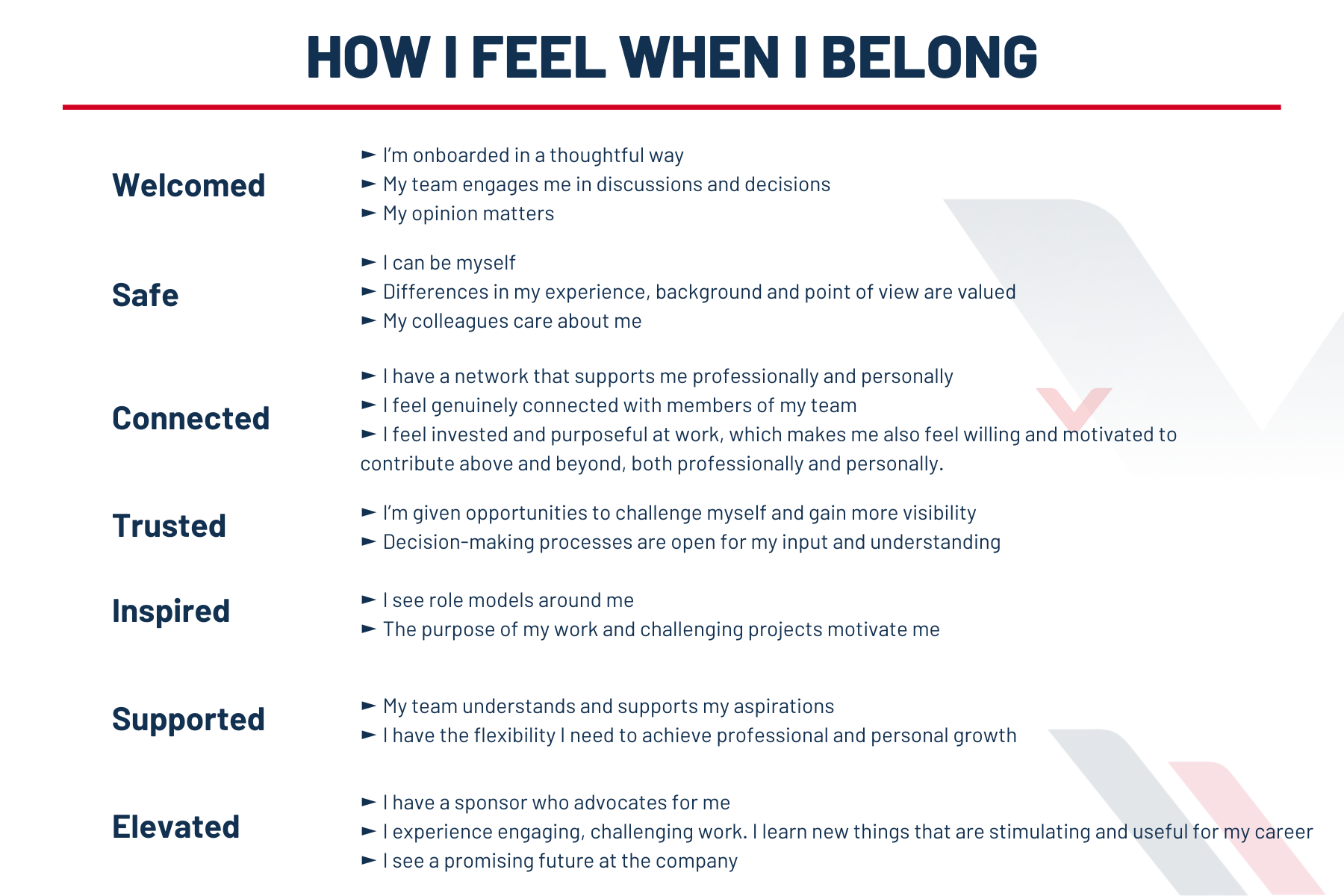Blog
How to make your employees feel welcome to engage?
A company is not only where we work, but it is where we commit most of our lives. 8 hours per day, at least 40 hours per week, it is obvious that one stays at their company even more than at home. Therefore, if there is only a hint of feeling of not belonging, it is inevitable that they will feel uncomfortable and unwilling to commit to their job. This is one of the most important factors that prevent employees from dedicating themselves to the company, leading to decreased productivity.
So how can you create the feeling of belonging and make your employees feel welcome to engage? Let’s find out the key factors that affect their feelings and 4 activities you can try to help them engage with your company.
Table of Contents
What is the feeling of belonging?
Belonging, in simplification, is the feeling of being included and accepted by a certain group. In a workplace, most people agree that they feel belonging when their contribution is recognised and they can connect with their colleagues as well as their company’s value. This leads to the problem: a working environment can only provide the feeling of belonging for some people, while others will feel excluded or unable to adapt to that environment.
The reason is that it is impossible for one to satisfy everyone. Each has its own unique characteristics and interests. Those traits might appear positive to some people but might be negative to some. Employees need time to understand and adapt to neutralise their different traits to create a united workplace.
Everything starts with the leaders…
At the time when the team is new, or a new member comes into the picture, all the members need time to adapt. How well they can get along depends largely on the team leader.
The team leader must be able to identify whether all the members feel they have a chance to be included. It can be a gesture of hospitability, a notice to explain the inside jokes, a friendly question asked to understand one better, etc. If members are willing to try to include each other in most aspects of their work life, then there is a high chance that most will finally feel belonging.
During this adaptation period, conflicts might happen. The team leader's task is to highlight each member’s contribution and build the bridge. This will help them see each other’s views, understand how everyone fits into the big picture of development together, and become more tolerant. By acknowledging their differences, the leader can encourage them to express their ideas better next time without being afraid of offending their colleagues.
According to research, the empowerment, accountability, courage, and humility of the team leader play an important role in encouraging workers to express themselves, resulting in better team collaboration, higher productivity and more commitment. However, it is not easy to notice who is feeling disconnected from the team when they are not willing to share. There are 04 activities you can try as a leader to build a united team.

LEAP: 04 activities to encourage the feeling of belonging
1. Listening & Learning (L)
As a leader, you should try to listen and learn more about each team member. Rather than just work, try figuring them out as a person. What are their interests, what is their family background, what do they usually do in their free time, etc. Of course, don’t expect them to be entirely open to you. Some want to separate their work life and daily life, and it’s completely normal. Not to mention you are also their boss, so they can’t be too carefree with you.
However, this will help you understand their mindset and might even give up some assumptions you made about them. By learning about your team members, you will be able to coordinate their interactions better, assign more suitable work for each individual, reduce conflicts, and have a grasp of how to improve their teamwork.
2. Engaging (E)
More than just tell them to share their thoughts blandly, try engaging in a different setting outside of work. Hold a meeting with them at the nearby coffee shop, organize a meal with some members, invite them to go play their favourite team sport together, etc. Be sincere and let them know that this appointment is for friendly personal purposes. It might sound too calculating, but it will lower their caution.
Changing the environment can create a huge different atmosphere for the talk and erase the level gap between you and them. With a more comfortable mindset, they will feel encouraged to be more open. You might hear a lot of things you won’t get to know in a formal meeting discussing their career path.
3. Asking & Appreciating (A)
As a leader, don’t just receive the staff work automatically. Try to give them some feedback and show that you appreciate their hard work. Rather than building a hierarchy, create a mentor-mentee relationship with them. Knowing that they can receive advice to become better, they will not be afraid to raise their opinions and discuss diverse views with other members.
If possible, create an opportunity for the team to understand one’s work and which role they play in the team. Look for ways individuals can support their collective work, career, and experience. Make them appreciate the contribution of each other. Thereby, everyone will understand that they are important to the team and feel belong.
4. Providing Support (P)
The last activity recommended to a leader to create the feeling of belonging in the workplace is showing support openly. Be brave to point out unwanted behaviours that make people feel discouraged or simply help someone explain themselves when they are misunderstood. Look out for team members who feel left out and accompany them to express themselves in front of other colleagues.
Do remember that you want to lower the conflicts within the team, not choose sides. This requires subtlety to avoid misunderstanding that you favor that employee over others.

Belonging needs trust
The key idea of creating the feeling of belonging is to remind everyone that they have allies and are not alone in the team. Just having a different idea doesn’t mean they are cut off from the collective. Help all members trust each other and feel psychologically safe to raise their voices. This is the foundation to create an open-minded and united team that is willing to commit themselves to their work.














